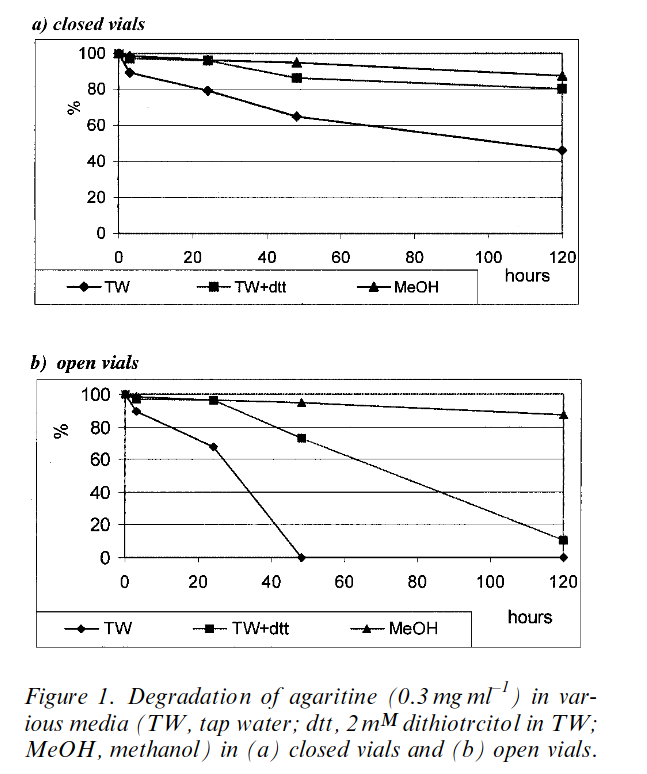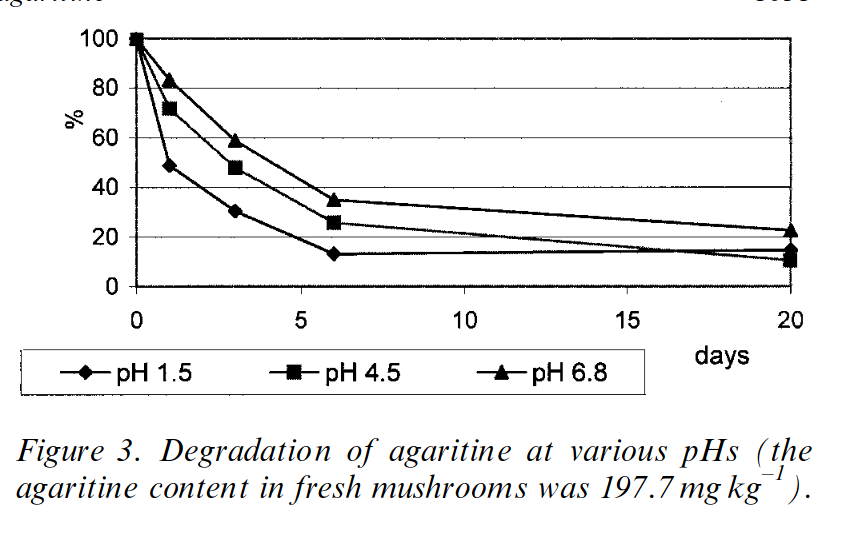Short summary from a quick search in the literature: Agaritine in water degrades quickly if oxygen is present, so if you can have an extended amount of time during which the mixture of water and ground mushroom is exposed to fresh air, that will help. As the mixture becomes acidic, degradation speeds up again even if the the atmosphere becomes oxygen poor. If the fermentation is meant to take more than 3 weeks, the acidic environment will probably be enough. Enzymes from the microbes are likely to have a combined effect that ultimately speeds up degradation as well, but that is a more complicated process and so it is not so easy to estimate the rates.
Low pH, exposure to water, oxygen, and time will help. It seems like it degrades quite quickly in water if oxygen is present, but in lacto fermentation you do want to create an anaerobic environment so you might have a quick degradation followed by the formation of a protective atmosphere.
The lowering of the pH will then help speed up the degradation again, but not as much as oxygen does.
Have a look at the following paper to see curves of how agaritine degrades in water in the presence of fresh air, in a closed vial, at different pH levels:
Since you have a microbiologically active community, you also have access to the enzymatic pathways. I have not found a specific paper about agaritine during fermentation. I can find other articles describing enzymatic transformations and degradation. Some of these transformations can change the molecule into more toxic forms, and other enzymes move it towards a degraded product. What I expect that you will see is that the net effect of having a complex enzymatic mixture will be faster degradation, even if the pathways may cross the more active toxic intermediates (which would also probably form in your intestine), these will only form for a short time and degrade.
You can refer to the paper below for specific examples of the enzymatic transformations that I am referring to. In this paper, the enzymes come from mushrooms that are ground into a liquid, and so they are mushroom enzymes. In the context of fermentation the source of the enzymes would be excreted by the fermenters into the ferment. These enzymes would likely not be specifically evolved for agaritine but instead represent general classes of enzymes that affect functional groups that are present in agaritine. It is difficult to make specific predictions.


